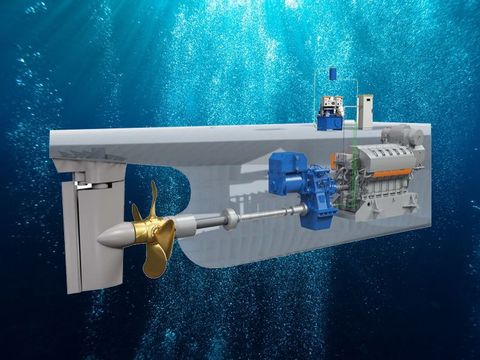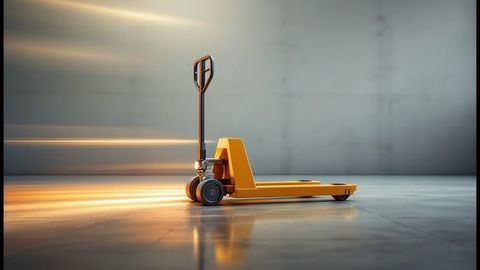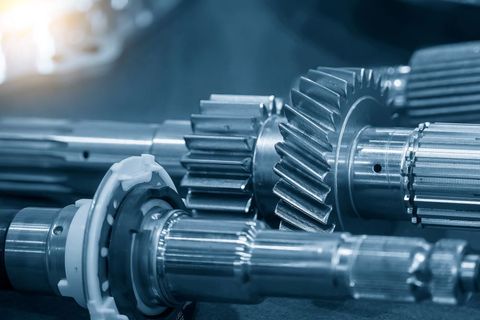The two most common types of industrial chillers are air-cooled chillers and water-cooled chillers. While both serve the same basic function removing unwanted heat they operate differently and suit different environments and industrial needs.

Why Industrial Chillers Matter
Who Uses Them?
Industries that generate heat during their operations need chillers to prevent overheating. Common users include:
Manufacturing plants
Hospitals and laboratories
Data centers
Beverage and food processors
Injection molding companies
Pharmaceutical companies
What Problems Do They Solve?
Equipment damage prevention – Overheating machinery can malfunction or break down.
Product quality control – Many products, especially in food or pharma, require strict temperature regulation.
Energy efficiency – Optimizing cooling can lower power consumption.
Workplace safety – Maintaining optimal temperatures helps reduce the risk of overheating-related incidents.
Without chillers, operational reliability and product quality in many sectors would decline significantly.
Recent Updates and Trends (2024–2025)
The past year has seen several key developments in industrial chiller technology, largely driven by environmental concerns, energy efficiency, and automation.
Top Trends
Eco-Friendly Refrigerants
Due to rising global regulations, there's a shift from traditional refrigerants (like R-22) to low-global warming potential (GWP) alternatives such as R-1234yf and R-513A.
Smart Monitoring and IoT Integration
Modern chillers come equipped with sensors and cloud-based dashboards. These allow real-time monitoring, predictive maintenance, and energy analytics.
Hybrid Cooling Systems
Some systems combine air and water cooling methods to balance energy efficiency with space and resource constraints.
Compact Modular Designs
Especially popular in urban and space-limited facilities, modular chillers allow scalability as the business grows.
Key Developments in 2024
April 2024: The U.S. Department of Energy published updated efficiency standards for large chillers.
August 2024: India’s Bureau of Energy Efficiency (BEE) updated its labeling program to include industrial chillers.
October 2024: The EU reinforced F-Gas Regulation policies, pushing companies to reduce high-GWP refrigerants.
How Policies and Laws Impact Industrial Chillers
Energy Regulations
Governments worldwide are implementing standards to reduce energy consumption in industrial equipment.
| Region | Regulation or Policy | Impact on Chillers |
|---|---|---|
| United States | DOE Efficiency Standards (2024 update) | Higher minimum EER (Energy Efficiency Ratio) for new units |
| European Union | F-Gas Regulation (2024 revision) | Reduced usage of HFC refrigerants |
| India | BEE Star Labeling (Industrial) | Voluntary labeling; expected to become mandatory |
| China | GB Standard updates | Encourages low-emission refrigerants and performance benchmarking |
Incentive Programs
EU Horizon Funding: Supports industrial energy efficiency projects.
India’s PAT Scheme (Perform, Achieve, Trade): Rewards facilities that exceed energy-saving targets.
US Tax Credits (Section 179D): Includes deductions for energy-efficient HVAC systems in commercial buildings.
Complying with these laws not only helps the environment but also protects businesses from regulatory fines and provides access to government incentives.
Helpful Tools and Resources
Whether you're selecting a new system or maintaining an existing one, the following tools and platforms can assist with decision-making and efficiency tracking.
Selection Tools
Trane Chiller Selection Tool
Helps engineers choose the right model based on capacity, climate, and application.
Link: www.trane.com
Carrier Chiller Selector
Allows side-by-side comparison of air- and water-cooled chillers.
Link: www.carrier.com
Johnson Controls YORK® Efficiency Calculator
Estimates energy cost savings for different chiller types.
Link: www.johnsoncontrols.com
Maintenance and Monitoring Tools
Daikin iCM (Intelligent Chiller Manager)
Cloud-based monitoring platform with alerts and performance analytics.
ASHRAE Energy Modeling Guide
Offers technical templates and simulation methods to calculate system performance.
Link: www.ashrae.org
Blue Star Service Scheduler App
For planning routine maintenance of chillers.
[Available on Android/iOS]
FAQs: Common Questions Answered
1. What’s the difference between air-cooled and water-cooled chillers?
Air-cooled chillers use ambient air to remove heat and are typically installed outdoors. They are simpler and cheaper to install, ideal for small-to-medium operations or locations with water scarcity.
Water-cooled chillers, on the other hand, use water from a cooling tower to reject heat. They are more efficient, especially in hot climates, but require additional infrastructure and regular water treatment.
2. Which is more energy-efficient?
Water-cooled chillers tend to be more energy-efficient, especially at high capacities and in facilities with steady loads. Their cooling water loop keeps condenser temperatures lower than air-cooled systems, resulting in better performance over time.
3. How long does an industrial chiller last?
Most industrial chillers have a lifespan of 15–20 years. Water-cooled systems may last slightly longer with proper maintenance. Factors such as usage patterns, maintenance frequency, and environmental conditions all influence longevity.
4. Do chillers need frequent maintenance?
Yes. Regular maintenance is essential. Air-cooled chillers need coil cleaning, fan checks, and refrigerant level monitoring, while water-cooled systems also require cooling tower cleaning, water treatment, and pump inspections.
A recommended maintenance frequency:
Monthly: Visual checks, pressure readings
Quarterly: Electrical inspections, water tests
Yearly: System-wide service including oil changes (for compressors)
5. Can I use a chiller in a high-humidity area?
Yes, but the type of chiller matters. In high-humidity environments, water-cooled chillers perform better because air-cooled systems can struggle with heat rejection in saturated air conditions.
Comparison: Air-Cooled vs. Water-Cooled Chillers
| Feature | Air-Cooled Chillers | Water-Cooled Chillers |
|---|---|---|
| Cooling Medium | Air | Water (cooling tower required) |
| Installation Cost | Lower | Higher |
| Maintenance Requirements | Moderate | High (requires water treatment) |
| Energy Efficiency | Moderate | High |
| Space Requirements | Smaller footprint | Larger footprint |
| Climate Suitability | Dry/moderate | All climates |
| Best Use Cases | Small-to-medium industries | Large-scale, constant-load industries |
Conclusion: A Smart Cooling Strategy
Industrial chillersboth air-cooled and water-cooledare vital for maintaining the operational health of modern industries. Choosing the right type depends on a balance of factors: budget, climate, cooling load, space, and regulatory obligations.
Quick Takeaways:
Air-cooled chillers are best for smaller setups and dry climates.
Water-cooled chillers suit high-capacity, energy-intensive environments.
Monitoring and maintenance play a significant role in performance and longevity.
Compliance with regional laws and using eco-friendly refrigerants are becoming non-negotiable.





